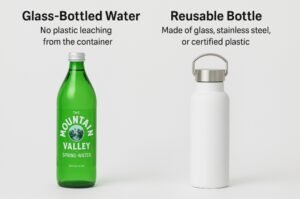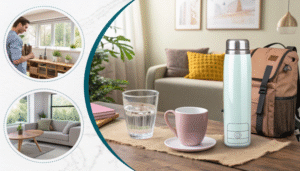You design drinkware for today's market, but do you know the rich story behind it? Without this context, your designs might miss the deep-seated human connections to the very act of drinking.
The history of drinkware is a journey from found natural objects to highly engineered tools. It mirrors our progress in technology, the evolution of social rituals, and our ever-changing relationship with beverages, from ancient ceremonies to modern on-the-go hydration.
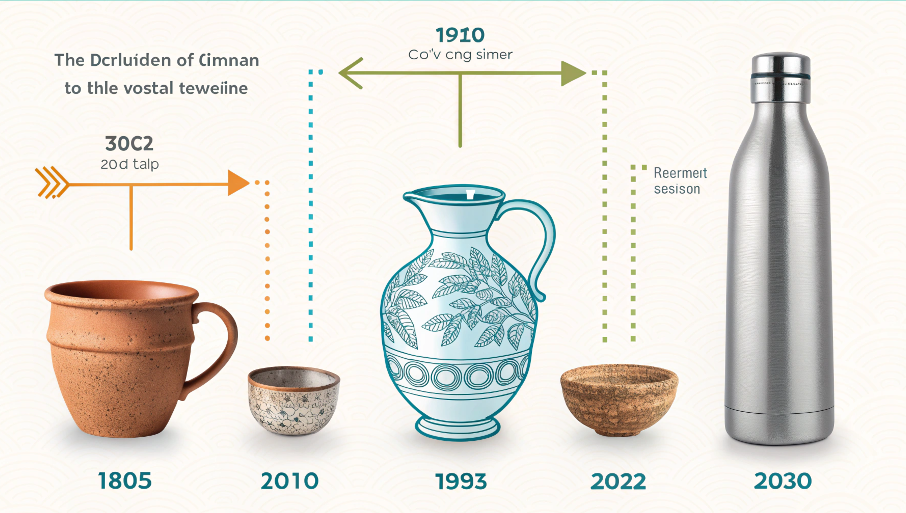
I often tell product developers like Emily that to innovate, you must first understand the past. Visiting a historical museum once, I saw a collection of Roman glass. It was thick, greenish, and full of bubbles, but I realized it was the "premium" product of its day. It hit me that our pursuit of perfection—clear borosilicate glass, flawless stainless steel—is part of a story that's thousands of years old. Every product we develop is another chapter in this long history of making the simple act of drinking better. This perspective adds depth and purpose to our work.
What does the history of drinkware tell us about society?
You might see a medieval tankard and a modern tumbler as just cups. But they are artifacts that tell a story about their time, a story you can use to inform your brand.
The history of drinkware is a direct reflection of human society. It shows our mastery of materials, from clay to glass to steel, and it mirrors our social rituals, from sacred ceremonies to personal hydration.

When I was sourcing a new ceramic line, I looked at 18th-century English pottery. The designs were becoming more delicate and refined. This wasn't just a change in style; it was because the tea and coffee rituals were becoming more important for the growing middle class. They wanted to show their sophistication. This taught me that we don't just sell an object; we sell a tool for a social performance. The design of your bottle or mug telegraphs a message about the person using it. History provides the dictionary for that language.
A Journey Through Materials and Rituals
Understanding the timeline helps you see where your product fits into this larger narrative. The evolution is not just about technology but about what drinking means to people.
- Ancient World (Pre-500 AD): The primary materials were clay, basic glass in places like Rome and Egypt, and carved stone or wood. Drinkware was often used for communal and ceremonial purposes, like drinking wine. The quality and material of your cup were a direct indicator of your wealth and social status. Simple clay for the common person, precious metals for the elite.
- Medieval Period (500-1500 AD): For most people, drinkware was functional and durable. Common materials included wood (known as treen), leather, and crude stoneware. Pewter became the choice for those who could afford it. The tavern tankard and the simple wooden cup defined this era of function over form.
-
- Renaissance to Industrial Revolution (1500-1800s): This period saw massive innovation. Venetian glass became the pinnacle of luxury. Porcelain teacups from Asia became highly sought-after status symbols. The mass production of ceramics in the 18th century finally made matching sets of drinkware accessible to the middle class, supporting new coffee and tea drinking rituals.
- Modern Era (1900s-Today): The 20th century introduced plastic, which offered low cost and convenience. The late 20th and early 21st centuries saw a shift toward performance and sustainability with the rise of stainless steel. Today, a water bottle is a statement about health, environmental consciousness, and personal style.
When did humans first start using cups?
You probably think of the first cup as a simple clay bowl. But humans needed to drink for millennia before pottery was even invented, a fact that reveals our basic instincts for tool use.
Humans began using cups tens of thousands of years ago, long before the invention of pottery. The first "cups" were likely natural, found objects like large seashells, hollowed-out gourds, and even cupped hands.

I once worked on a project to design a bottle with a very ergonomic grip. We went through dozens of 3D-printed prototypes. During the process, I was reminded that the first "cup" was the human hand. The way we instinctively cup our hands to drink water is the most natural form factor there is. It's a useful anchor point for any designer. How close can we get to that intuitive, natural feel in a manufactured product? This fundamental question can lead to incredibly user-friendly designs.
The Dawn of the Drinking Vessel
The journey to the modern mug began with our ancestors' resourcefulness. The stages show a clear progression from simply finding a tool to actively manufacturing one.
| Stage | Materials Used | Key Innovation | Implication for Today's Designs |
|---|---|---|---|
| Phase 1: Found Vessels | Seashells, gourds, animal horns, coconuts. | Using Nature: The cognitive leap to see a natural object as a functional tool. | The search for organic, nature-inspired shapes and materials is timeless. |
| Phase 2: Carved Vessels | Wood, soft stone (like soapstone). | Purposeful Crafting: Actively shaping a material to create a better vessel. | Durability and a handcrafted feel have always been valued qualities. |
| Phase 3: The Pottery Revolution | Fired clay. | Material Transformation: Using fire to turn soft clay into a hard, waterproof object. | This was the beginning of mass production and material science in drinkware. |
This progression shows a desire not just to solve a problem (thirst), but to solve it better—with more durable, more efficient, and eventually, more beautiful tools. As a product developer, you are continuing this exact process.
When did drinking from glass become common?
You specify glass for its clean taste and modern look. But for most of history, it was a luxury good, and understanding its journey from rare to common adds context to your material choice.
While glass vessels existed in ancient Rome, drinking from clear, affordable glass only became common for the average person after the Industrial Revolution in the 19th century, when mass-production techniques were invented.
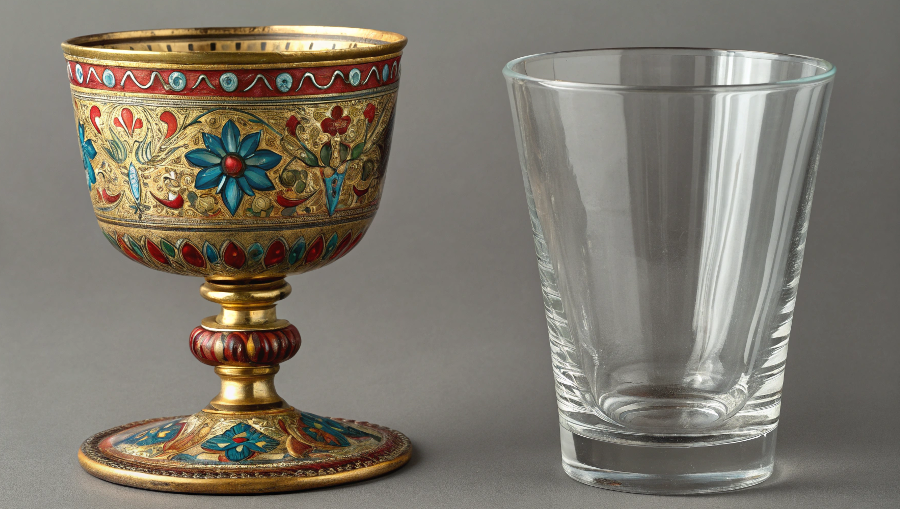
A client of mine wanted to launch a line of borosilicate glass mugs. They were worried the price would be too high compared to ceramic. I explained the history. I told them that for centuries, perfectly clear glass was a luxury on par with jewelry. We should position it not as "expensive ceramic" but as "accessible luxury." By framing it this way, we are connecting to its deep history as a premium material. This story helped them build a successful marketing campaign that focused on the elegance and purity of glass, justifying the higher price point.
The Journey of Glass to the Everyday Table
The move from a treasured rarity to a household staple happened in a few key steps.
- Early Luxury (Ancient Rome - 14th Century): The earliest glass was often thick, full of impurities, and colored green or brown. It was used by the wealthy, but it was not the crystal-clear material we know today.
- The Venetian Breakthrough (15th-16th Century): Glassmakers in Venice invented cristallo, an exceptionally clear and delicate glass. This was a closely guarded secret, and Venetian glass became the ultimate luxury item for European royalty. It was beautiful but fragile and astronomically expensive.
- English Lead Crystal (17th Century): George Ravenscroft invented lead glass, which was heavier, stronger, and more brilliant than Venetian glass. It was easier to cut and engrave. This made glass more durable, but it was still a high-end, handcrafted product.
- The Industrial Revolution (19th Century): This was the tipping point. The invention of the glass pressing machine allowed for the rapid, low-cost mass production of glassware. Suddenly, every family could afford glass tumblers. Glass was no longer just for the rich; it was for everyone. This is the moment glass became a truly democratic material.
How can you design for better mug and glass storage?
Your customer loves the mug you designed, but it clutters their cabinet. Thinking about storage isn't an afterthought; it's a key part of the user experience and a way to innovate.
Design for storage by creating stackable mugs with a recessed base that fits snugly on the rim of the one below. For hanging, ensure handles are large and strong. For all drinkware, consider standard cabinet depths.
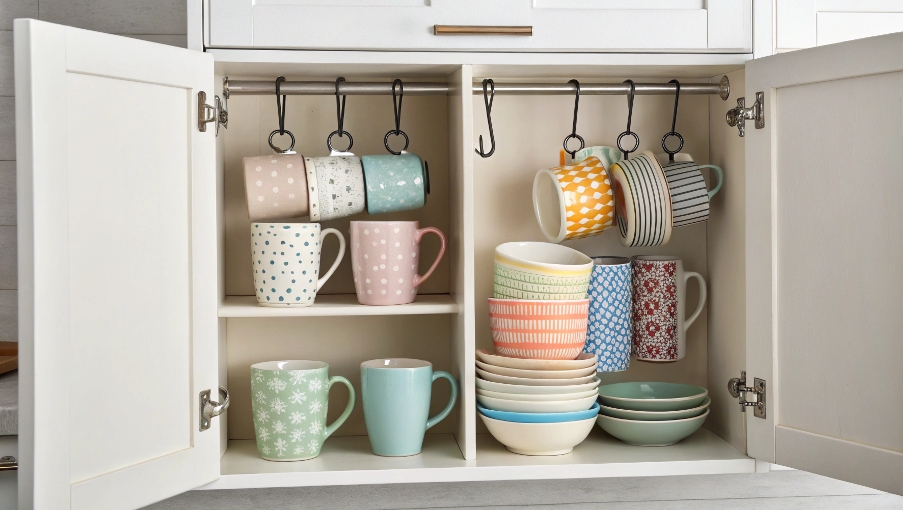
I had a huge win with a client by focusing on one simple feature: stackability. We were designing a new ceramic mug for a coffee brand. During our research, we saw how chaotic cafe backrooms and home cabinets were. So, we spent extra time designing a small, unglazed foot on the bottom of the mug that would nest securely inside the rim of another. It cost a little more in mold development, but it became their number one selling point. They marketed it as the "cabinet-friendly cup." It solved a real, nagging problem for both their wholesale and retail customers.
From Frustration to Feature: A Developer's Guide
As a developer, you can turn a user's pain point into a standout feature for your product.
| Storage Problem | The User's Frustration | The Developer's Design Solution |
|---|---|---|
| Limited Cabinet Space | "My mugs take up the whole shelf and look messy." | Design Stackable Mugs. Create a recessed base or a tapered body. Test the prototypes to ensure they stack straight and securely without wobbling. |
| Awkward Hanging | "The handles on my mugs are too small for my hooks." | Design a Better Handle. Ensure the handle opening is large enough for standard hooks and is balanced so the mug hangs straight. Reinforce the handle joint for durability. |
| Risk of Chipping | "My glasses get chipped on the rim when I store them upside down." | Educate the User & Design for Strength. Advise storing glasses rim-up. For mugs meant for stacking, ensure the base that makes contact with the rim below is smooth and unglazed to prevent scratching. |
| Doesn't Fit the Space | "This trendy, oversized mug doesn't fit under my coffee maker." | Consider the Ecosystem. Research standard dimensions. Check the height of popular single-serve coffee machines and the depth of standard kitchen cabinets. A great mug fits the user's life. |
By thinking about the mug's life when it's not in use, you demonstrate a deeper understanding of your customer.
Conclusion
The evolution of drinkware is a direct reflection of our own. Understanding this long history—from natural gourds to stackable mugs—gives you the context to create innovative products that truly resonate with users.

